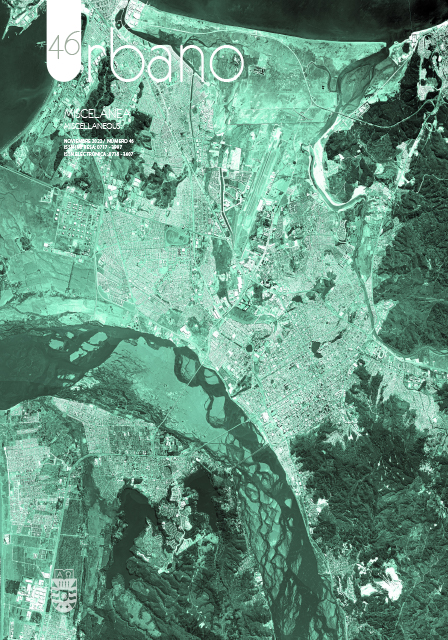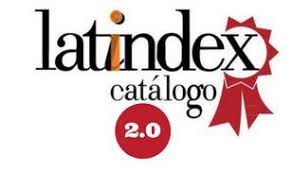Stability cycles, and fast-slow changes and variables in landscapes of the Concepción Metropolitan Area using the study of socio-ecological systems: an exploratory analysis
DOI:
https://doi.org/10.22320/07183607.2022.25.46.04Keywords:
Socio-ecological systems, Metropolitan Area of Concepción, landscapes, stability, changeAbstract
Landscapes can maximize their strengths in moments of stability by deeply developing their character and, thus, managing the pressures or disturbances behind slow and fast changes in the Socio-Ecological Systems (SES) to avoid their transformation. Fast variables explain short-term changes and violent rupture processes in stability/change cycles for natural disaster issues. On the other hand, slow variables explain long-term changes and more complex processes in stability/change cycles. The work below focused on studying the Concepción Metropolitan Area (AMC, in Spanish), Chile, which has undergone relevant changes throughout its history but has not been studied as an SES using its slow and fast variables. An exploratory literary review of 150 articles was made in scientific databases without using scientific support software, considering "Concepción" and "Concepción Metropolitan Area" as keywords. The main results highlight short-term phenomena cycles -fast variables- with a major impact, exemplified in natural disasters (earthquakes, tsunamis, floods, fires, and drought), changes in urban planning (urban plans and hygienism), as well as long-term phenomena -slow variables-, with more notable impacts in certain key areas, namely political (conquest and war between indigenous/Spanish/Chilean peoples), economic (boom/bust of business cycles) and environmental (wetland intervention, creation of different protection laws).
Downloads
References
ABBAS, S., SHIRAZI, S.A. Y QURESHI, S. (2018). SWOT analysis for socio-ecological landscape variation as a precursor to the management of the mountainous Kanshi watershed, Salt Range of Pakistan. International Journal of Sustainable Development & World Ecology, 25(4), 351-361. DOI: 10.1080/13504509.2017.1416701
ARAYA, D., METZGER, M. J., STUART, N., WILSON, A. M. W. Y CARVAJAL, D. (2017). A spatial fuzzy logic approach to urban multi-hazard impact assessment in Concepción, Chile. Science of the Total Environment, 576, 508-519 DOI: https://doi.org/10.1016/j.scitotenv.2016.10.077
ARKSEY, H. Y O’MALLEY, L. (2005). Scoping studies: towards a methodological framework. International Journal of Social Research Methodology, 8(1), 19-32.
ARNOLD, M. Y OSORIO, F. (2008). La teoría general de sistemas y su aporte conceptual a las ciencias sociales. En: Osorio, F., Arnold, M., González López, S. y Aguado López, E. (Coords.) La nueva teoría social en Hispanoamérica: introducción a la teoría de sistemas constructivista (pp. 17-44). México: Universidad Autónoma.
ARTS, B., BUIZER, M., HORLINGS, L., INGRAM, V., VAN OOSTEN, C. Y OPDAM, P. (2017). Landscape Approaches: A State-of-the-Art Review. Annual Review of Environment and Resources, 42, 439–63.
BERKES, F., COLDING, J. Y FOLKE, C. (Eds.) (2003). Navigating Social-Ecological Systems: Building Resilience for Complexity and Change. Cambridge, UK: Cambridge University Press.
BOHENSKY, E. L. Y LEITCH, A. M. (2014). Framing the flood: a media analysis of themes of resilience in the 2011 Brisbane flood. Regional Environmental Change, 14(2), 475-488.
BUSTAMANTE, L. P. Y SALINAS, E. (2007). Crecimiento urbano y globalización: transformaciones del Área Metropolitana de Concepción, Chile, 1992–2002. Scripta Nova, Revista Electrónica de Geografía y Ciencias Sociales, XI(251).
CAPRA, F. (1998). La trama de la vida. Una nueva perspectiva de los sistemas vivos. Barcelona: Anagrama.
Consejo Nacional de Innovación para el Desarrollo [CNID] – Comisión Nacional para la Resiliencia frente a Desastres de Origen Natural [CREDEN] (2016). Hacia un Chile resiliente frente a desastres. Una oportunidad. Estrategia nacional de investigación, desarrollo e innovación para un Chile resiliente frente a desastres de origen natural. Recuperado de http://www.cnid.cl/wp-content/uploads/2016/12/INFORME-DESASTRES-NATURALES.pdf
COTE, M. Y NIGHTINGALE, A. J. (2012). Resilience thinking meets social theory: Situating social change in Socio-Ecological Systems (SES) research. Progress in Human Geography, 36(4), 475–489. DOI: https://doi.org/10.1177/0309132511425708
CUMMING, G.S. (2011). Spatial Resilience in Social-Ecological Systems. Springer: New York.
DIAMOND, J. (2010). Two views of collapse. Nature, 463, 880-881.
ELSAWAH, S., GUILLAUME, J., FILATOVA, T., ROOK, J. Y JAKEMAN, A. (2015). A methodology for eliciting, representing and analysing stakeholder knowledge for decision making on complex socio-ecological systems: From cognitive maps to agent-based models. Journal of Environmental Management, 151, 500-516.
FES (2021) ¿Qué es un FES Sistema? Recuperado de http://www.ctf.cl/fes-sistema/
FOLEY, J., DEFRIES, R., ASNER, G., BARFORD, C., BONAN, G., CARPENTER, S. Y SNYDER, P. (2005). Global consequences of land use. Science, 309(5), 570-574.
GALLARDO KLENNER, L. (2016). Antropoceno en Chile y oportunidades para un desarrollo sostenible y resiliente. Documentos del CR2. Recuperado de https://www.cr2.cl/wp-content/uploads/2016/08/antropoceno_constitucion.pdf
GARREAUD, R., BOISIER, J., RONDANELLI, R., MONTECINOS, A., SEPÚLVEDA, H. Y VELOSO ÁGUILA, D. (2020). The Central Chile Mega Drought (2010–2018): A climate dynamics perspective. International Journal of Climatology, 40, 421– 439.
GOLDMAN, M. J., NADASDY, P. Y TURNER, M. D. (Eds.). (2011). Knowing nature: conversations at the intersection of political ecology and science studies. University of Chicago: Press Chicago.
GREEN, L. (2021). Whose knowledge? What is knowledge? What is a university? E-flux Architecture. Recuperado de https://www.e-flux.com/architecture/survivance/410017/applications-invited-transdisciplinary-scholars-to-re-design-higher-education/
GRIMM, V., SCHMIDT, E. Y WISSEL, C. (1992). On the Application of Stability Concepts in Ecology. Ecological Modelling, 63, 143–161.
GUTIÉRREZ, P., SUÁREZ, M.L. Y VIDAL-ABARCA, M.R. (2015). Evaluación de los servicios ecosistémicos de un socio-ecosistema singular a través de la historia: “La Huerta de Murcia”. Ecosistemas, 24(3): 51-60. DOI: 10.7818/ECOS.2015.24-3.08
HERNÁNDEZ, H. (1983). El Gran Concepción: desarrollo histórico y estructura urbana primera parte. Génesis y evolución: de las fundaciones militares a la conurbación industrial. Informaciones Geográficas Chile, 30, 47-70.
HERTZ, T., GARCÍA, M. Y SCHLÜTER, M. (2020). From nouns to verbs: How process ontologies enhance our understanding of social-ecological systems understood as complex adaptive systems. People and Nature, 2(2), 328-339. DOI: https://doi.org/10.1002/pan3.10079
HOLLING, C. (2001). Understanding the complexity of economic, ecological, and social systems. Ecosystems, 4, 390–405. DOI: https://doi.org/10.1007/s10021-001-0101-5
HOLLING, C. S. Y GUNDERSON, L. (2002). Panarchy: Understanding Transformations in Human and Natural Systems. Island Press: Washington, DC.
IANNUCCI, C. Y MUNAFÒ, M. (2012). The Response component in DPSIR and the SES dynamical stability. En EnviroInfo Dessau 2012, Part 1: Core Application Areas (pp. 311-317). Recuperado de http://enviroinfo.eu/sites/default/files/pdfs/vol7574/0311.pdf
INGOLD, T. (1993). The temporality of the landscape. World Archaeology, 25(2), 152-174.
Instituto Nacional de Estadísticas [INE] (2017). Estimaciones y proyecciones de la población de Chile 1992-2050. Total país síntesis de resultados. Recuperado de http://webanterior.ine.cl/docs/default-source/demogr%C3%A1ficas-y-vitales/demograf%C3%ADa/base-2017/estimaciones-y-proyecciones-de-poblacion/sintesis-estimaciones-y-proyecciones-de-la-poblacion-chile-1992-2050.pdf?sfvrsn=50ca59d2_6
IPCC (2007). Working Group II Report: Impacts, adaptation, and vulnerability. IPCC Fourth Assessment Report (AR4). Geneva: IPCC.
JAQUE, E., OJEDA, C. Y ALMENDRA, D. (2020). Presiones por el uso de los comunes urbanos en Áreas Metropolitanas: Caso del humedal Boca Maule en Chile. Ateliê Geográfico, 14(3), 74–99. DOI: https://doi.org/10.5216/ag.v14i3.60518
KIRKSEY, E. (2021). Chemosociality. E-flux Architecture. Recuperado de https://summatechnologiae.e-flux.com/?seminar=chemosociality.
LUDWIG, D., WALKER, B. Y HOLLING, C. S. (1997). Sustainability, Stability, and Resilience. Conservation Ecology, 1(1), 7.
MANCILLA GARCÍA, M., HERTZ, T., SCHLÜTER, M., PREISER, R. Y WOERMANN, M. (2020). Adopting process-relational perspectives to tackle the challenges of social-ecological systems research. Ecology and Society, 25(1), 29. DOI: https://doi.org/10.5751/ES-11425-250129
MARDONES, M. Y VIDAL, C. (2001). La zonificación y evaluación de los riesgos naturales de tipo geomorfológico: un instrumento para la planificación urbana en la ciudad de Concepción. EURE, 27(81), 97-122.
Ministerio del Medio Ambiente de Chile [MMA] (2022). Sesiona por primera vez el Comité de Transición Socio Ecológica Justa enfocado en las denominadas zonas de sacrificio. Recuperado de https://mma.gob.cl/sesiona-por-primera-vez-el-comite-de-transicion-socioecologica-justa-enfocado-en-las-denominadas-zonas-de-sacrificio/
NOGUÉ, J. (2014). Sentido del lugar, paisaje y conflicto. Geopolítica(s), Revista de Estudios sobre Espacio y Poder, 155(2), 155-163.
ORELLANA OSSANDÓN, A. M., BANNEN LANATA, P., FUENTES ARCE, L. A. Y GILABERT PERALTA, H. (2013). Huellas del proceso de metropolización en Chile. Revista INVI, 28(77), 17-66.
PULLIN, A. Y STEWART, G. B. (2006). Guidelines for Systematic Review in Conservation and Environmental Management. Conservation Biology, 20(6), 1647-1656.
QUIÑONES, D., CARO, J. Y MARÍN, V.H. (2017). Manejo resiliente de cuencas forestales de Chile: La cuenca de Cayucupil (Cañete) como caso de estudio. Boletín Nahuelbuta Natural, 1, 7–30. Recuperado de http://www.cordilleradenahuelbuta.cl/portal/wp-content/uploads/2017/06/3-Manejo-resiliente-de-Cuencas-forestales-de-Chile-La-cuenca-de-cayucupil-ilovepdf-compressed.pdf
ROJAS, J., AZÓCAR, G., MUÑOZ, M. D., VEGA, C., KINDLER, A. Y KABISCH, S. (2006). Atlas social y ambiental del área metropolitana de Concepción. Región del Bío-Bío, Chile. Transformaciones sociodemográficas y ambientales 1992-2002. Editorial Universidad de Concepción: Concepción.
ROJAS QUEZADA, C., MUÑIZ OLIVERA, I. Y GARCÍA-LÓPEZ, M. (2009). Estructura urbana y policentrismo en el Área Metropolitana de Concepción. EURE, 35(105), 47-70.
ROJAS QUEZADA, C., PINO, J. Y JAQUE CASTILLO, E. (2013). Strategic Environmental Assessment in Latin America: A methodological proposal for urban planning in the Metropolitan Area of Concepción (Chile). Land Use Policy, 30(1), 519-527. DOI: https://doi.org/10.1016/j.landusepol.2012.04.018
ROMERO ARAVENA, H. Y SMITH, P. (2009). Efectos del crecimiento urbano del Área Metropolitana de Concepción sobre los humedales de Rocuant-Andalién, Los Batros y Lenga. Revista De Geografía Norte Grande, (43), 81-93.
RUBIO, P. (1996). La teoría general de sistemas y el paisaje. Treballs de la Societat Catalana de Geografía, (41), 91-104.
SALAZAR, G. Y PINTO, J. (1999-2002). Historia Contemporánea de Chile. Volúmenes I al V. Santiago de Chile: Lom Ediciones.
SALINAS VARELA, E. Y BAERISWYL RADA, S. (2017). El Programa de Recuperación Urbana Ribera Norte; veinte años de aciertos y desaciertos de una política de proyectos urbanos en Chile. Revista de Urbanismo, 36, 1-22.
SARRICOLEA, P., HERRERA, M. Y MESEGUER-RUÍZ, O. (2016). Climatic regionalization of continental Chile. Journal of Maps, 13(2), 66-73.
SCHOON, M. Y VAN DER LEEUW, S. (2015). The shift toward social-ecological systems perspectives: Insights into human-nature relationship. Natures Sciences Societés, 23(2), 166-174.
SIJTSMA, F.J., MEHNEN, N. Y ANGELSTAM, P. (2019). Multi-scale mapping of cultural ecosystem services in a socio-ecological landscape: A case study of the international Wadden Sea Region. Landscape Ecology, 34, 1751–1768. DOI: https://doi.org/10.1007/s10980-019-00841-8
STEELMAN, T. (2016). U.S. wildfire governance as social-ecological problem. Ecology and Society, 21(4). Recuperado de http://www.jstor.org/stable/26270036
SUNDERLAND, T., ABDOULAYE, R., AHAMMAD, R., ASAHA, S., BAUDRON, F., DEAKIN, E., DURIAUX, J. … Y VAN VIANEN, J. (2017). A methodological approach for assessing cross-site landscape change: Understanding socio-ecological systems. Forest Policy and Economics, 84, 83-91. DOI: https://doi.org/10.1016/j.forpol.2017.04.013.
TAINTER, J. (1988). The collapse of complex societies. Cambridge, MA: Cambridge University Press.
TORRES, R., AZÓCAR, G., ROJAS, J., MONTECINOS, A. Y PAREDES, P. (2015). Vulnerability and resistance to neoliberal environmental changes: An assessment of agriculture and forestry in the Biobio region of Chile (1974 – 2014). GEOFORUM, 60, 107–122.
URQUIZA GÓMEZ, A. Y CADENAS, H. (2015). Sistemas socio-ecológicos: elementos teóricos y conceptuales para la discusión en torno a vulnerabilidad hídrica. L'Ordinaire des Amériques, 218, 1-12.
WALKER, B., GUNDERSON, L., KINZIG, A., FOLKE, C., CARPENTER, S. Y SCHULTZ, L. (2006). A Handful of Heuristics and Some Propositions for Understanding Resilience in Social-Ecological Systems. Ecology and Society, 11(1), 1-11.
WALKER, B., HOLLING, C., CARPENTER, S. Y KINZIG, A. (2004). Resilience, Adaptability and Transformability in Social–ecological Systems. Ecology and Society, 9(2), 1-9.
WERNER, B. Y MCNAMARA, D. (2007). Dynamics of coupled human-landscape systems. Geomorphology, 91(3–4), 393-407.
WINDER, N. (2007). Innovation and metastability: A systems model. Ecology and Society, 12(2). Recuperado de https://www.jstor.org/stable/26267886
WOODGATE, G. Y REDCLIFT, M. (1998). From a 'Sociology of Nature' to Environmental Sociology: Beyond Social Construction. Environmental Values, 7(1), 3-24.
Downloads
Published
How to Cite
Issue
Section
License
Copyright (c) 2022 Carolina Grace Ojeda-Leal, Kay Joaquín Bergamini Ladrón de Guevara

This work is licensed under a Creative Commons Attribution-ShareAlike 4.0 International License.
The content of articles which are published in each edition of Habitat Sustentable, is the exclusive responsibility of the author(s) and does not necessarily represent the thinking or compromise the opinion of University of the Bio-Bio.
The author(s) conserve their copyright and guarantee to the journal, the right of first publication of their work. This will simultaneously be subject to the Creative Commons Recognition License CC BY-SA, which allows others to share-copy, transform or create new materials from this work for non-commercial purposes, as long as they recognize authorship and the first publication in this journal, and its new creations are under a license with the same terms.![]()























